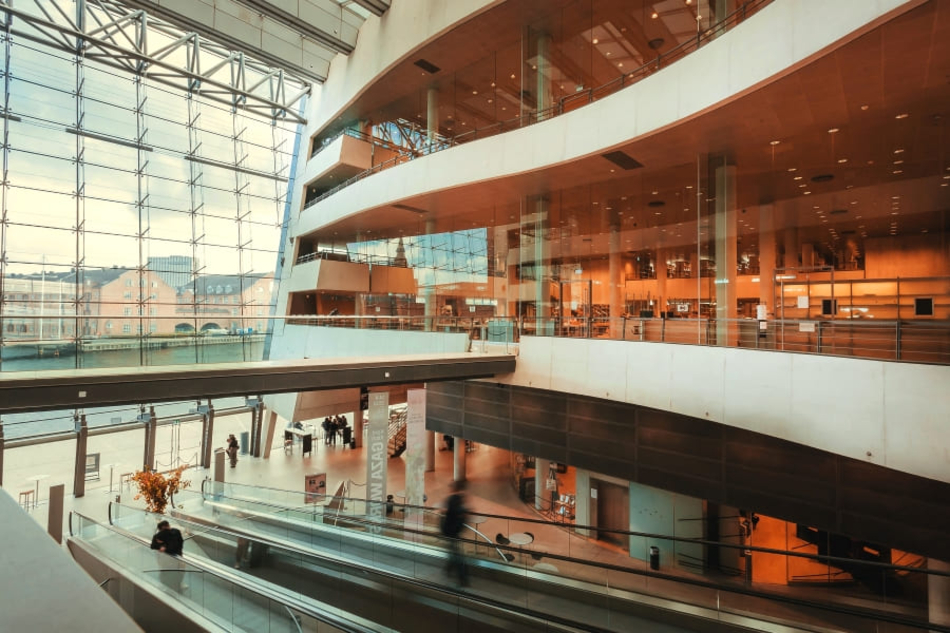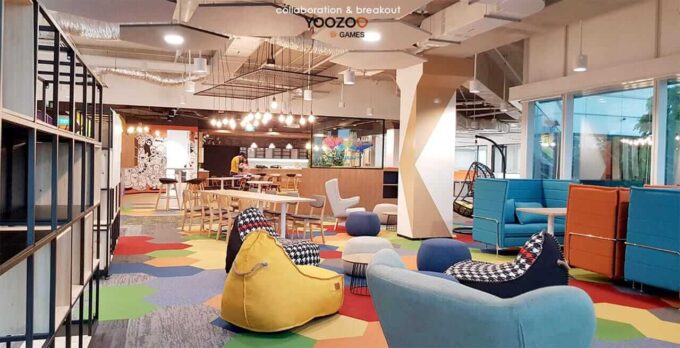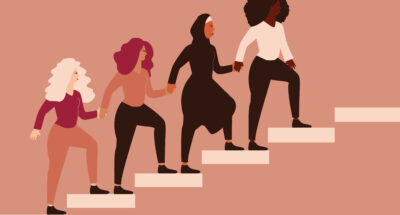
5 trends shaping the future of workplace health
Boosting your employees' mental health isn't just good for them and the people around them – it has a demonstrable impact on the bottom line. Here's how the landscape is shaping up....

by Alyson Meister Published 4 September 2023 in Human Resources • 6 min read
Remote working is here to stay. Walk down any main street today, and you’ll see someone in a café, bar or bookstore leading a meeting, sharing a presentation, or drafting a report. Stop by a neighbor’s home, and the chances are they’ll have a work computer linked up anywhere from the bedroom to the kitchen to the living room sofa. The flexibility gains, diminished travel costs and greater autonomy over how, when and where we work are obvious.
But this shift to work on the go – in the coffee shop, the home, the metro, in transit – and being “always on” posits something else. In 2023, we live very much in our heads. As employees have retreated en masse from their organization’s office environment, work has moved into our minds; the needs and demands of what we do have become increasingly fixated on and limited to our cognitive systems and processes, all of it enabled by technology. Good news for work-life balance, perhaps. But what about mind-body?
The notion that our minds and bodies might be somehow distinct dates way back to Descartes’ theory of dualism. The fact is, however, our minds are as much connected to physical makeup as any other organ. Our brains, our minds, our cognitive sense of self, it all lives within our bodies, enmeshed within and working alongside our senses, our central nervous system, and our physiological functions and mechanisms. How we think is inexorably tied to how we feel, see, touch, smell, sense, interpret and engage with the physical world around us, and those in it.
So how does this relate to work, and to flexible working in particular? My research with Brianna Caza and Blake Ashforth explores this important and too often neglected link between our physical environments, in particular, the physical landscape of our varied workplace and our sense of self as human beings and as workers.
Imagine exploring your childhood home, revisiting your primary school or university, or maybe walking through your very first workplace. These important places housed self-defining experiences, relationships, and memories that shaped the trajectory of who you are today. When revisiting these physical places, you may find that the physical context – the design and architecture, smells, light, music, the energy or ‘vibe’ – together trigger different emotions, thoughts, mindsets and behaviors – even different selves.

These places are as much a part of you as the memories created in them. Our workplaces are far more than a set of random characteristics that provide contextual background to professional activities; they exert considerable influence over how we feel and how we work. For example, workplaces can satisfy (or not, as the case may be) core identity motivations: our need to belong, to feel positive about ourselves, to feel situated and stable, to belong ‘somewhere’, or to feel a sense of coherence and continuity over time. Practically, they can also actively influence our ability to function, to perform tasks, and to connect and interact with other people.
Relate this to your own experience. Have you ever worked in a place where you felt a sense of “this is not me”? Where just entering the building ignited stress? On the flip side, is there an office where you felt a sense of comfort, calm, and creativity – maybe even a sense of ‘home’ or belonging? As yourself, where do you get your most focused and deep work done? Where do you feel you work at your best, and why?
Are there functional, sensory, or social factors that empower or impede you? Does it depend on the type of work you’re doing? The Head of Design for a global sporting good organization recently told me that his most creative and innovative designs come when he’s working on a Swiss train through the countryside: moving forward, yet still somehow close to nature.
Of course, just as one physical workplace can accelerate our capabilities and empower us to realize our best selves, another can cramp our efforts. Environments that distract us or make us physically or psychologically uncomfortable, or where we lack light, color, or fresh air, can stifle creativity and cognitive flow – hampering our motivation, productivity, and well-being.
Despite the ongoing contention between employees and employers about policies for where employees ‘should’ work, the various forms of remote working feel like they’re here to stay. So, for those of us who have some agency in where we work, we can be more aware and proactive about shaping these spaces such that they better reflect who we are and who we want to be, and empower us to give and achieve the absolute best of ourselves when we are working.

A good place to start is by understanding that workplaces integrate different elements that influence how we think, function, interact with other people, and perform our tasks. These elements are:
Functional: the physical dimensions of the environment that enable us to perform (or not). Think about your desk, internet connection, computer, and tools. What kinds of work are facilitated easily in this particular space? Are there certain tasks that are best performed in different places (spaces with more access, bigger screen, or even a sturdy office chair for instance)?
Sensory: the sounds, views, light, textures, smells, even colors that shape the way we feel and sense. Consider things like views of nature, birdsong, or traffic, or loud or soft music. How might these trigger different moods, identities, or mindsets? How do they enhance or regulate your stress?
Social: the presence of other people and possibilities of interacting which can enhance or detract from work. Who can you engage with and how? Can you meet in person or only virtually? What is the social landscape and what opportunities does that bring? Do you feel included where you’re working, and at ease? Do you feel psychologically safe?
Temporal: cues and markers that are familiar to you and that signal past success or future goals. Consider diplomas or awards you’re proud of, artifacts from your personal life, or hobbies that remind you of identities that are important parts of you, where you come from, and where you’re going. Children’s paintings, a medal from your triathlon, or a memory from your last workplace – all these things and more can connect you to your authentic self.
With these things in mind, how might you now set about taking greater ownership of the workspaces that you inhabit, shaping these spaces to better accommodate your needs, your obligations, your challenges, and your well-being? How might you actively engage in place-making, so that your workplace works better for you?
Talking to people and gathering evidence from the field, there are lots of ways that people can take ownership of their workplace, be it in or outside of the home, or even in shared workspaces such as corporate offices. This can be personalizing a space with identity markers that encourage feelings of connection and empowerment. It can be rotating the spaces where you work according to the kind of work you need to do.
Science tells us that even the most subtle shifts in environment – slight changes in heat, light, noise, or even ceiling height, for example – can shape the way we think and feel. Getting up and moving somewhere else can trigger new mindsets and thought processes.
Placemaking can be as simple as putting on headphones to listen to music or the sound of rain as you work. Or, like me, it can be seeking out a busy coffee shop to block out the urgent and slip into the reverie that encourages more creative thinking. Whether it’s rearranging the furniture, lighting, or sounds, creating boundaries or adjusting the social landscape by opening or closing a door, even simply investing in a couple of houseplants, the onus is on us, I believe, to take greater ownership of the workplaces we inhabit – and to shape the spaces that shape us.

Professor of Leadership and Organizational Behavior at IMD
Alyson Meister is Professor of Leadership and Organizational Behavior and Director of the Future Leaders program at IMD Business School. Specializing in the development of globally oriented, adaptive, and inclusive organizations, she has worked with executives, teams, and organizations from professional services to industrial goods and technology. She also serves as co-chair of One Mind at Work’s Scientific Advisory Committee, with a focus on advancing mental health in the workplace. Follow her on Twitter: @alymeister.

27 May 2024 • by Alyson Meister, Nele Dael in Workplace
Boosting your employees' mental health isn't just good for them and the people around them – it has a demonstrable impact on the bottom line. Here's how the landscape is shaping up....

1 March 2024 • by Heather Cairns-Lee in Workplace
Four ways in which businesses can reframe the workplace environment more positively for women ...

1 February 2024 • by Michael D. Watkins in Workplace
They’re charismatic, confident, visionary – and grandiose, defensive, punishing. Narcissists can be inspiring, and they can break you. The key is to be aware of what you’re getting into, says Michael Watkins....

5 January 2024 • by Robert Hooijberg, Arturo Bris, David Bach, José Parra Moyano, Michael R. Wade, Julia Binder, Howard H. Yu, Simon J. Evenett, Alyson Meister, Salvatore Cantale, Stefan Michel in Workplace
What can we expect to see over the coming year? IMD professors offer their expert predictions, and we invite you to join in....
Explore first person business intelligence from top minds curated for a global executive audience